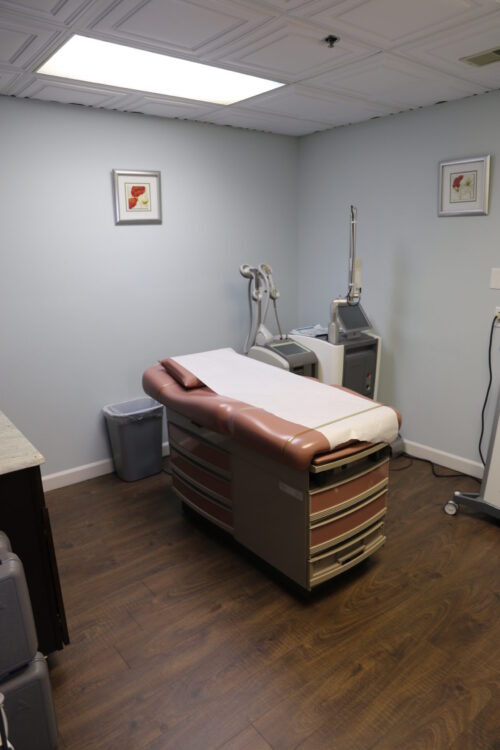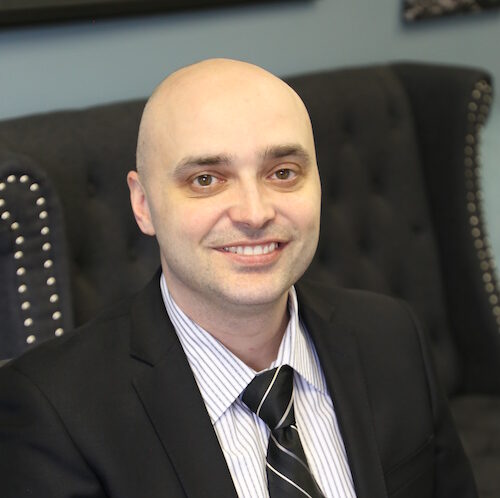By Emil Shakov, MD, FACS
Why not make them shine?
All too often, signs of aging and fatigue can take away from the beautiful features of our face. Because of the COVID-19 pandemic and the need to wear masks, the most prominent feature of our face is the eyes.
Hooding or loose skin above the eyelids, hollowing around the eyes, wrinkles and fine lines, dark under-eye circles and herniated fat below the eyes can make you look old and tired. So, what causes these problems and what can you do about it without surgery?
Hooded Upper Eyelids
Dermatochalasis is the appearance of excess skin over the upper eyelid that can cause a hooded appearance. This can be the result of aging, which can lead to the brow decreasing in height, loss of skin elasticity, weakening of the connective tissue suspending the skin above the eye, and the effects of gravity. If severe enough, the excess skin can disrupt your vision.
Blepharoplasty is a procedure that removes the excess skin above the eyelids to correct this problem. However, many patients do not want to go under the knife and do not want to incur the expense of such a procedure. Fortunately, there are alternatives to surgery which may contract the skin above the eyes.
One treatment that works well is microneedling (MN) with radiofrequency (RF) energy. The procedure is quick and, if done properly, can be relatively pain free. It works by having many small needles puncture the skin and then deliver RF energy. The MN will stimulate collagen production which will strengthen the skin in the treatment area. The RF will tighten the skin and stimulate collagen production. After the treatment, you may experience swelling and redness which typically resolve in a few days. You may need several treatments depending on the amount of loose skin you have.
PDOthreadlift of the brow can accomplish a simultaneous brow lift while raising the loose skin. The threads are inserted below the skin with the use of a cannula. The threads then anchor to the deep layers of the skin with barbs that are unidirectional, so when the thread is pulled back, they create an instantaneous lift. I usually recommend patients to get neurotoxin like Botox, Jeuveau or Dysport to the forehead to minimize the movement while the threads scar into place. Results can have lasting effects up to two years.
A more aggressive treatment can be performed with a CO2laser. The laser is ablative, meaning it causes a wound to the skin that leads to shedding. The laser also penetrates into the deeper layers of the skin which causes collagen stimulation. Laser treatments can have a longer downtime, leaving you red and swollen for up to a week or longer. One treatment may not be enough to achieve the desired effect.
Hollowing Around the Eyes
Lost volume around the eyes can lead to your eyes appearing “sunken in” and can appear around the entire eye or in isolated areas like a tear-trough hollow, which is on the lower portion, or on the upper portion of the eye. It can lead to thin looking skin around the eye, dark circles, shadowing around the eyes, and a tired appearance. Aging, weight loss, genetics, lack of sleep, and dehydration are just some of the causes for this.
One of the most common procedures performed to improve and help restore volume is dermal filler augmentation. Dermal fillers such as Versa, Juvederm, and Restylane can be injected in and around the eye to help restore a more youthful appearance. The procedure is relatively quick, has minimal to no downtime, and may have temporary bruising. The results can last from 6 months to a year.
Fat transfer is a more invasive procedure than dermal fillers but can be accomplished in a similar fashion. The fat is removed from one part of your body through a mini liposuction under sterile conditions. The fat is then prepared and purified prior to injecting it. The results can be long-lasting.
Wrinkles Around the Eyes
Periorbital wrinkles can occur after years of eye movements, such as squinting and opening and closing your eyes, sun damage to the skin, smoking and aging. The lines can show up on the side typically referred to as “crow’s feet” and around the lower eyelid. There are many options for treatment.
The most common treatment involves an injection of a neurotoxin such as Botox, Jeuveau, or Dysport. It works by relaxing the muscles that cause the contraction on the skin for a period of 3 months. It can take up to 10 days for the effects to be noticed and can be used to treat crow’s feet or wrinkles around the lower lid. Temporary bruising can occur with this treatment.
As with treatment of hooded skin above the eye, you can also use microneedling with RF to treat this area. The treatment will lessen the appearance of the wrinkles and lines and has some downtime associated with this procedure like the hooded skin treatment.
Herniated Fat
Fat can protrude, or herniate, resulting in lower lid bags or festoons. This can also be associated with a hollow deformity that creates a line in the tear trough or could extend in an oblique line to the mid-face commonly referred as the nasojugal groove or nasojugal crease.
Treatment of the herniated fat is typically performed with surgery but can be accomplished by an injection. Phosphatidylcholine (PC) is a chemical made up of fatty acids, glycerol, and phosphorous. It may promote lipolysis, breakdown of fats, when injected directly into fat. This can be used to decrease the fat pad below the eye over several treatments. The treatment does create excessive swelling that can last up to a week, so prepare to wear large sunglasses!
You could camouflage the lines with dermal filler. When performed by a skillful physician, the filler is injected directly in the deformity and can have immediate results. Overzealous correction can lead to an unsightly side effect called malar edema. That happens when the filler migrates into the superficial layer of the skin that then causes swelling and an appearance of puffiness. The treatment can be complex but will typically respond with hyaluronidase, an enzyme that dissolves fillers that are derived from hyaluronic acid.
It is important when seeking treatment of these procedures to only be treated by qualified physicians. All too often these procedures are performed by unqualified physicians and non-physicians with potentially disastrous effects.
Emil Shakov, MD, FACS is a board-certified general surgeon who is the medical director and one of the leading physicians at The Youth Fountain (www.theyouthfountain.com) located in Freehold, New Jersey. He has been actively performing medical aesthetic procedures since 2013. Follow him on Instagram @theyouthfountain.
Find a Home-Based Business to Start-Up >>> Hundreds of Business Listings.





















































Nice and good blog thanks for sharing Now that you are aware of the crucial information about Dermal fillers New Jersey, you can consider undergoing it. And if you have already made up your mind, then consult the professionals at Forever Medspa for the best results. Just Visit: forevermedspanj. com/how-long-do-new-facial-fillers/